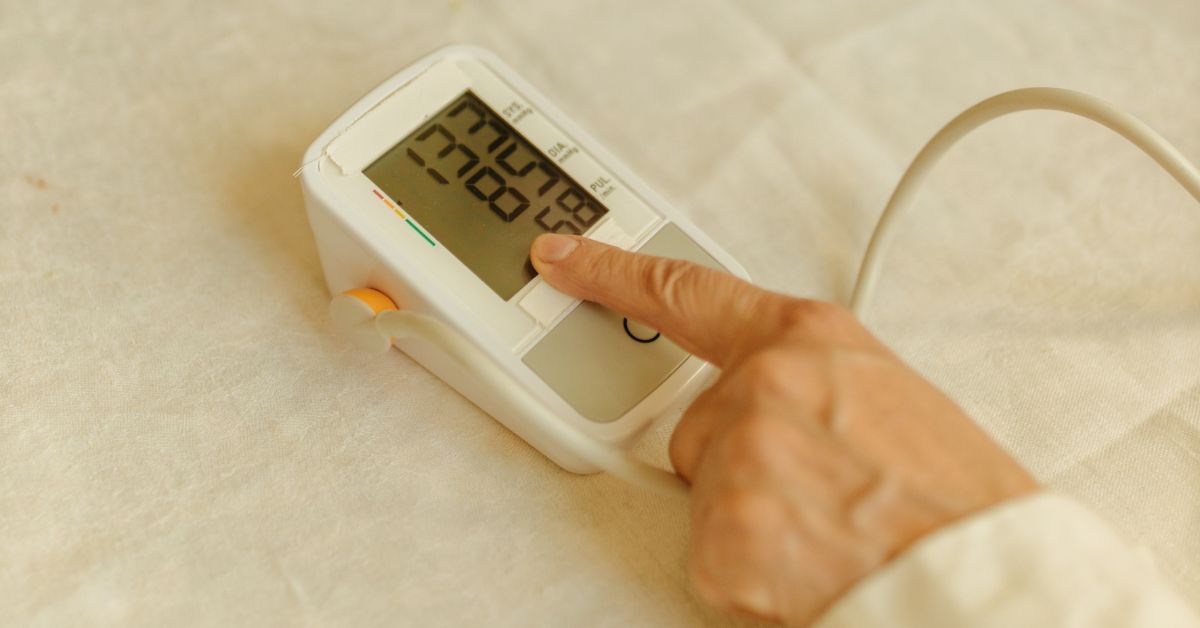Now that we’ve covered the basics of what high blood pressure is and why it’s so important to manage it, let’s take the first small step towards better heart health.
Your Task: Tracking Your Blood Pressure
As you improve your heart health, it’s essential to start monitoring your blood pressure consistently. Regular measurement will help you see improvements over time and give you valuable insights into how your lifestyle changes are impacting your health. Start getting into the habit of tracking your blood pressure at least 3 times a week, or everyday if you can!
It’s worth your while to invest in a home blood pressure monitor. Upper arm monitors tend to give more accurate results than those that go around your wrist. They’re available at most pharmacies, or through online retailers.

Take These 5 Steps to Ensure Reliable Results
- Take three readings each time. Blood pressure is dynamic – it’s constantly fluctuating, depending on what you’re doing, how you’re breathing, or even what you’re thinking, so taking multiple readings helps give you a clearer picture of where your numbers truly stand. Take the first reading, wait one minute, and then take two more, each separated by a minute. Record all of your readings and note the average.
- Prepare for the reading. Avoid food, caffeine, and exercise for at least 30 minutes prior to measurement. These factors can temporarily elevate your blood pressure, leading to inaccurate readings. It’s also a good idea to empty your bladder before taking your measurements.
- Focus on calm during the reading. To help stay calm, pay attention to your breathing. One powerful technique is to make your exhalation longer than your inhalation. For example, breathe in for 4 counts and out for 6 (or better yet, breathe in for 4 counts and out for 8 counts). This practice helps slow your heart rate and brings a sense of calm that can lead to more accurate readings.
- Take your readings while sitting comfortably with your feet flat on the ground and your arm resting at heart level. Avoid talking or moving during the reading to ensure accuracy.
- Record your blood pressure in a journal or keep a log on your phone. This log will serve as your baseline for tracking your progress, and it’s a useful tool to share with your doctor at your checkup appointments.

Why This Matters
Knowing your numbers is empowering. It allows you to take control and see how your efforts are impacting your health. As you incorporate heart-healthy habits, you’ll likely begin to see positive changes in your readings.
Remember, blood pressure fluctuates naturally, so don’t worry if you notice variation between readings. What matters is the overall trend as we work together to improve your heart health.
Stay Connected
Feel free to send an email and share the trajectory of your blood pressure readings with us. We’re here to celebrate your progress and support you through any challenges along the way.
I look forward to hearing from you!
Disclaimer: The information provided here is for educational purposes only and is not intended to replace or serve as medical advice. Always consult with your healthcare provider or a qualified medical professional before making any changes to your treatment plan, lifestyle, or health routine, especially regarding your blood pressure or other medical conditions.

